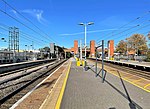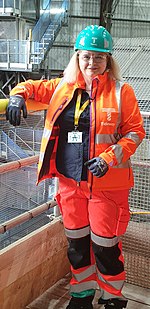Stevenage Clock Tower

Stevenage Clock Tower is a Grade II listed structure in Town Square in the centre of Stevenage New Town. A panel on the tower records the visit of Elizabeth II in 1959. The queen unveiled it as part of the ceremony to open the first phase of the town centre.Designed by Leonard Vincent, the architect of Stevenage Development Corporation, the tower is 19 meters high. It is constructed of reinforced concrete with granite cladding. The fact that the concrete is not exposed gives the design a modernist rather than brutalist appearance. It has been described as "iconic".In the 1970s a bronze relief sculpture by Franta Belsky was added to the west face of the clock tower. It depicts Lewis Silkin, a Labour politician who served as Minister of Town and Country Planning implementing the New Towns Act of 1946 which set up development corporations to construct new towns.
Excerpt from the Wikipedia article Stevenage Clock Tower (License: CC BY-SA 3.0, Authors, Images).Stevenage Clock Tower
Town Square,
Geographical coordinates (GPS) Address Nearby Places Show on map
Geographical coordinates (GPS)
| Latitude | Longitude |
|---|---|
| N 51.90169 ° | E -0.20159 ° |
Address
Town Square
SG1 1BP , Old Town
England, United Kingdom
Open on Google Maps










